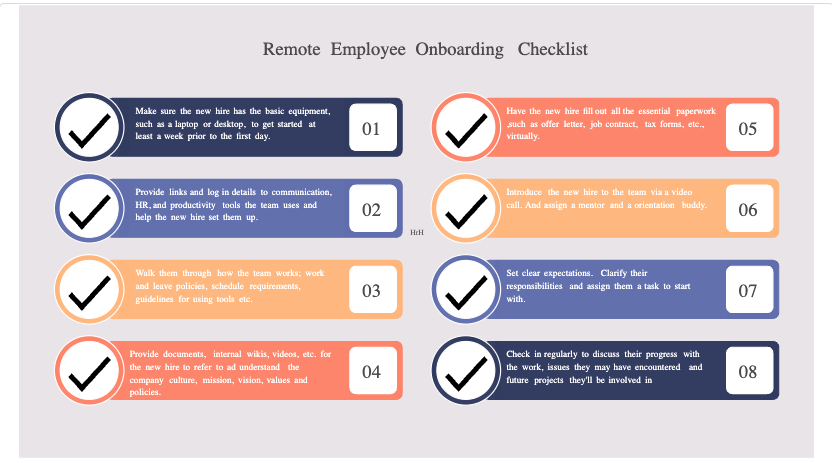Onboarding Process with an Onboarding Checklist: The client onboarding journey is critical to client retention, and client onboarding is the procedure that you use to bring in a new client to your organization or service. It’s similar to onboarding a new employee, and it’s important to develop a long-term, mutually beneficial relationship.
Onboarding Process with an Onboarding Checklist:
As simple as that, client onboarding entails a series of steps that must be carried out correctly. Once you understand the client’s journey from knowledge to purchase, you can design a thorough client onboarding procedure that is beneficial to all parties. An effective client onboarding process developed by user onboarding software facilitates success and satisfaction, and when executed and maintained properly, it can inspire loyalty and advocacy.
Whether your team is searching for innovative ways to improve the onboarding process, or if you’re just getting started with onboarding clients and want to get off to a good start, here are some good checklists to get you started:
- Ace your introductions
It is critical to introduce the onboarding team to a new client to get things started in the right direction. Make sure the client understands each team member’s role and responsibility, how they will assist, and who to contact if they have any questions. Assume a member of the team is on the team for more than just the onboarding period. For instance, a business analyst or an implementation manager. In that case, this relationship has the potential to be long-lasting and important in establishing a mutually beneficial partnership.
- Collect information about the client
One of the most important parts of an effective onboarding process is gathering important client information. How can you be successful if you don’t have the right information? The data collection process should start immediately after the welcome is sent. All the areas that are required to get your client ready and onboarded for the next steps, whether it’s an application form, client allotted work, or access to tools and techniques, involve data collection.If information is gathered through an application form, ensure that the form is useful and conveys important, necessary information, which may include the background of the company, additional technical settings, and much more, depending on what data is effectively required for the engagement.
- Clarify expectations
Your sales team is prepared to pass on the information required from the sales funnel, which is generally less than half of the total information required. Services teams will need to dig deeper to comprehend additional marketing data.
Your client’s objectives should be clearly defined from the start and supported by implementable deliverables to meet those goals. Clarification of what is anticipated throughout the interaction is required and essential. To understand what your client expects in terms of results, you must clarify mid-journey expectations with specifics such as timing, milestones, and feedback.
To achieve success in the partnership, everyone must take part in goal-setting. Expectations should be realistic, well-defined, and adhered to throughout the journey.
- Communicate internally
Your onboarding program is important not only for the client’s success but also for the success of your company. Ensure that your dedicated team is up date on all client-related issues. This helps to ensure that all procedures are being followed and that the team is on the right track.
Begin by educating your entire team and providing an overview of the new client. They identify that they are up to the task. Ensure that every team member understands the client’s goals and that everyone is aware of their own accountability and responsibility.
Allocate any necessary materials to your team, keep a record of notes, and provide access to any evaluations, agreements, or other important documents they may require.
When they have completed their assigned work and the team is on the same page, the kickoff call can be made. This call is one of the most essential and crucial meetings that occur at the start of the client engagement.
This call is critical because it ensures that your members of the team put their best foot forward for the client and lays the groundwork for the rest of your interaction. Not only will you learn more about the client, but the client will also learn and understand your team and the working dynamics.
- Ask for feedback
Continuous growth, optimization, and updates are important aspects of any effective and successful onboarding process. The best way to find out how your team can enhance customer onboarding is to ask them. Send out a quick survey to know what customers hope to learn during the onboarding process. While in the onboarding process, make sure to record and track all the feedback for your internal team. Finally, it’s a good idea to send out official feedback and survey assessment after onboarding that goes into depth about the particular points of the onboarding.
Conclusion
The client onboarding process is important to long-term client retention. It’s no secret that first impressions are crucial, and by creating a comprehensive onboarding process, you can drastically improve things. A new client onboarding process will also ensure that every client is fairly treated, as well as improve your company’s reputation in a competitive industry.

